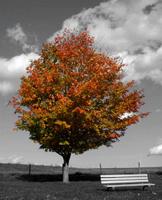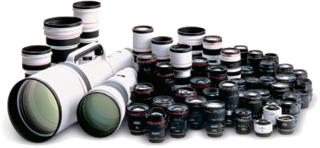The Shot of A Lifetime
scene, only to find that you could have composed the scene in a better
way, missed the focus, used a too-slow shutter speed to get a
sharp hand-held shot, too wide an aperture for good depth of field, and
so on? Before the days of the digital darkroom, that
“once-in-a-lifetime” shot may have just become a missed opportunity.
Today, we can fix or alter those mistakes (to some degree) while
sitting at our computers. To illustrate one technique for saving an
image, I’ll enhance a picture
in Photoshop CS that I took of two cheetahs at the Sacramento Zoo. You can use
the same techniques in Adobe Photoshop Elements and other image-editing
programs.
Let’s begin.

Original Image. Above is my
original photograph. For
one thing, it’s a bit flat, because I underexposed the image by
1/4-stop to avoid burning out the white portion of the animals’ fur.
But
that’s not the only problem with the image. I used a shutter speed that
was too slow, so the foreground cheetah’s head is slightly blurred.
What’s more, the focus point was aimed between the two animals, so the
foreground cheetah is slightly out of focus (because I was shooting at
f/5.6, and the effective focal length of my lens was 520mm, which
produced very shallow depth of field). Finally, the foreground grass is
washed out and overexposed.

Crop. Next I used the Crop tool to draw more
interest to the animals. I could have used a tighter crop, but as
you’ll see, my intention was to use a digital frame, so I needed some
extra room around the subject.
Next I created a duplicate layer,
because I wanted to selectively sharpen only part of the image, namely
the foreground cheetah. (I am writing this for both Elements and
Photoshop CS users. Because there is no History brush in Elements,
which can save time and steps in the following process, I am using
Layers for this technique.)

Sharpen. Next I used Unsharp Mask to sharpen the
entire bottom layer. For newcomers to Photoshop, Unsharp Mask is the
preferred way to sharpen an image.
 Erase. The next step was to go back to the top layer
Erase. The next step was to go back to the top layerand use the Eraser tool over the foreground cheetah’s body to reveal
the sharper area of the picture below. By clicking on the Eye icon on
the bottom layer, I could see how much of the cheetah’s body I was
erasing.

Levels. To correct for the dull color and lack of
contrast, I used Levels, moving the sliders to inside the right side
(highlight) and left side (shadows) of the histogram. This is a common
technique for correcting an image.
More work is needed. Levels and Unsharp Mask did a
great job on the cheetahs, but now the foreground grass is even more
overexposed, and quite frankly, quite annoying to me.
Clone, blur and add a frame. To
hide the overexposed
grass, I used the Clone Stamp tool to paste some of the non-overexposed
grass over the overexposed
 grass. To cover up repeating patterns (a
grass. To cover up repeating patterns (adead giveaway when using the Clone Stamp tool), I slightly blurred the
pasted-in areas of the scene with the Blur tool. To hide those areas
even more, I used the Camera frame in PhotoFrame 2.5
(www.Ononesoftware.com), a Photoshop Plug-in. The new and improved
image took only about 10 minutes to create, but I’ve been using
Photoshop for a few years.
Experiment. I always encourage my workshop students
to experiment with different effects, offered in Photoshop’s Filter,
Actions and with Plug-ins. Here, I created a sepia-toned image using the
Sepia Toning Action in Photoshop CS. To sum all of this up, don’t be so quick to delete an image
in-camera. Tremendous correcting and enhancing possibilities await you
in the digital darkroom.



 July is always fun to do, but photographing them can sometimes be your biggest headache. Here are some digital photography tips for shooting fireworks pictures.
July is always fun to do, but photographing them can sometimes be your biggest headache. Here are some digital photography tips for shooting fireworks pictures. It's all in the timing
It's all in the timing












